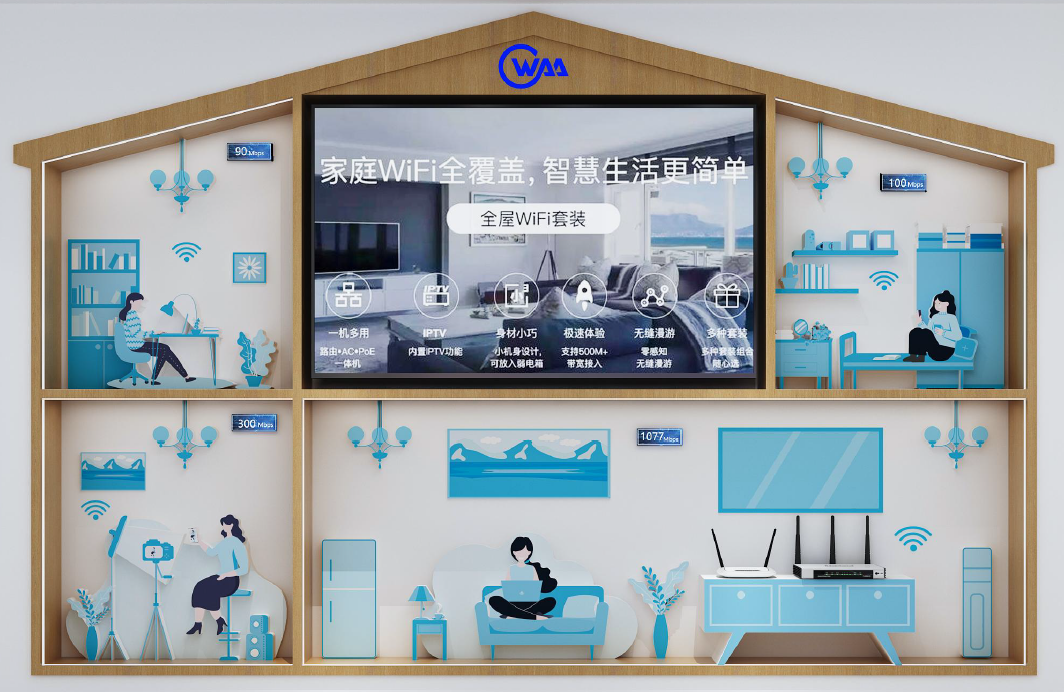A Demonstration Site for Home Scenarios
With the evolution of home entertainment and working methods, modern families increasingly rely on powerful wireless networks to support their daily activities. Wireless networks in home scenarios usually need to cover a variety of spaces, including living rooms, bedrooms, study rooms, kitchens and even outdoor seating areas. As the consumption of online education, remote work and digital entertainment content continues to rise, home networks are used in various scenarios, including streaming video viewing, online learning platforms, email, web browsing, large file downloads and uploads, social media interaction and remote control of smart home devices. Users expect their networks to be stable and efficient and support seamless multi-device switching and multi-tasking, so that they can smoothly run critical applications such as video calls and online education platforms. Therefore, home wireless network deployment should be able to support a wide range of device accesses, multi-tasking concurrent processing, and provide low-latency data transmission to meet the comprehensive needs of modern families.

The WAA certification ensures high efficiency, high stability and a high-quality experience
The WAA built a demonstration site that uses the "Fiber to the Room" (FTTR) deployment for experience purposes in the exhibition hall to present the performance indicators of the home network. The FTTR deployment offers high bandwidth, enabling the rapid transmission of large data streams. It also ensures low latency, allowing for quick response times in real-time applications. The network provides wide coverage, delivering wireless access to every corner of the home, along with stable connections for a consistent and uninterrupted user experience. Advanced security measures protect the home network from external threats, while the network's overall stability and reliability ensure it can continue operating under any circumstances and meet the comprehensive performance requirements in a single device scenario. Together, these features provide users with a seamless, efficient, and secure network connection experience.



